Project Pipeline Phases


The EBMS Task module contains pipeline settings to phase or rank a task as it moves from station to station along the pipeline. The pipeline data can be used to track the specific steps of a project and the amount of time spent in each step or phase, and to create summary data to answer a host of questions about the process.
Types
This pipeline phase feature can be used to report the progress of various processes, such as sales, manufacturing, delivery tasks, or any other project that contains sequential steps. For example:
-
Sales or customer contact pipeline:

-
Manufacturing pipeline:
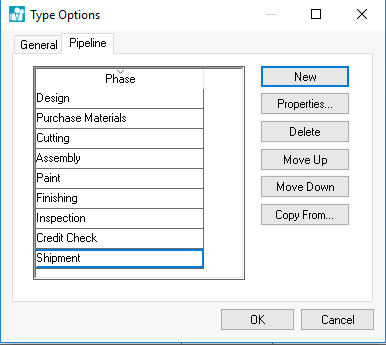
-
Work order pipeline:
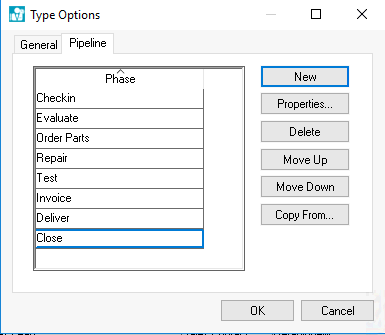
Creating Pipeline Phases:
Multiple pipeline phases can be created within the task module by creating unique phase lists for each task type. Complete the following steps to create pipeline phases:
-
Open the task type list by selecting Labor > Task Options from the main EBMS menu and click on the Task Types tab as shown below:
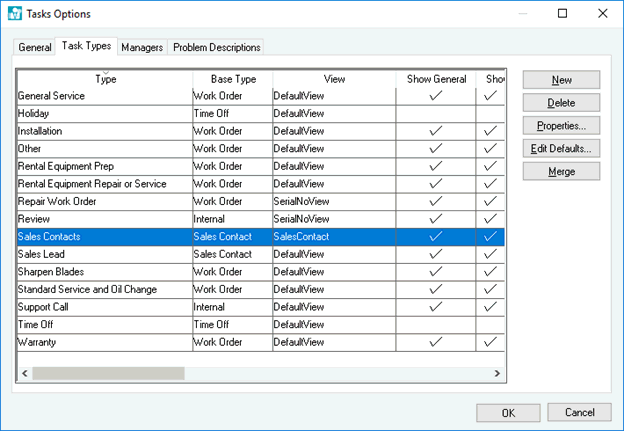
-
Select the task Type from the list and select the Properties button
-
Select the Pipeline tab to view the Phase list as shown below:

-
Use the New or Properties buttons to create a new Phase or to change the Phase label.
-
Use the Move Up or Move Down buttons to reorder the phase list, because the pipeline is order-specific.
-
Select the Copy From button to copy the Phase list from another task type.
-
Select OK to save the phase list for the pipeline.
-
Repeat to add Pipeline phase lists to other task types. Review Creating Task Types and Defaults for more details on creating task types.
Setting a Phase and Ranking a Task:
Moving the phase setting within a task from one step on the pipeline to the next is a powerful way to record the sales process or manage the manufacturing task. Complete the following steps to view or set the Phase or Ranking:
-
Open or create a task. Review the Creating an Open Task section for more details on creating a task.
-
Click on the Schedule tab as shown below:
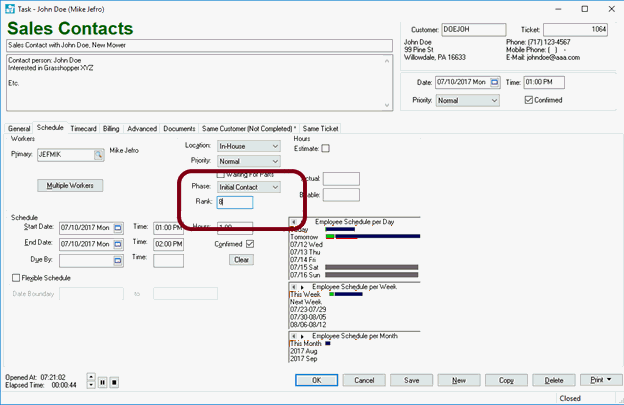
-
Select the Phase from the dropdown list.
-
Set the Rank value to weight the urgency of the task or value the sales lead.
Review the Scheduling Tasks section for more details on the Schedule tab.
Record the Phase and Rank on each timecard record by clicking on the Timecard tab as shown below: 
Note that the Phase and Rank is recorded for each time record added within the Timecard line. This data gives the user a lot of information to measure the amount of time spent for a specific phase, the length of time required to move the task to the next phase, the phase history, and the ability to record all tasks with a specific Phase or Rank.
The Pipeline Phase setting can also be set within the Enter Time button dialog.
Review Recording Labor and Completing the Task for more details on the Timecard tab and the Enter Time dialog.
Viewing Tasks Within a Specific Stage:
Use the Query and Group settings to display the projects based on the status or pipeline phase as shown below: 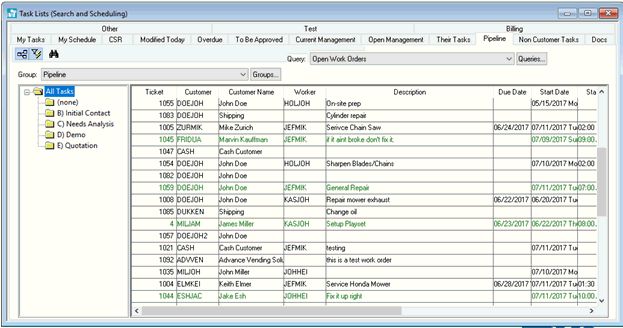
Review the Creating Task and Work Order Groups section for more details on creating groups.
Review the Creating Task Queries section for more details on creating a list for a specific pipeline phase.